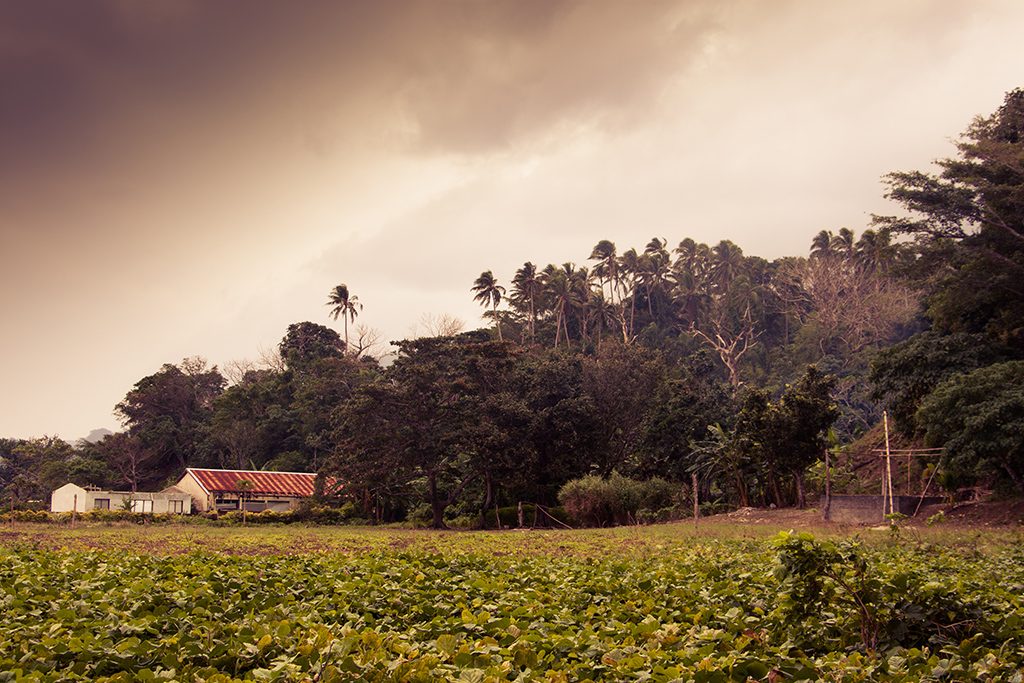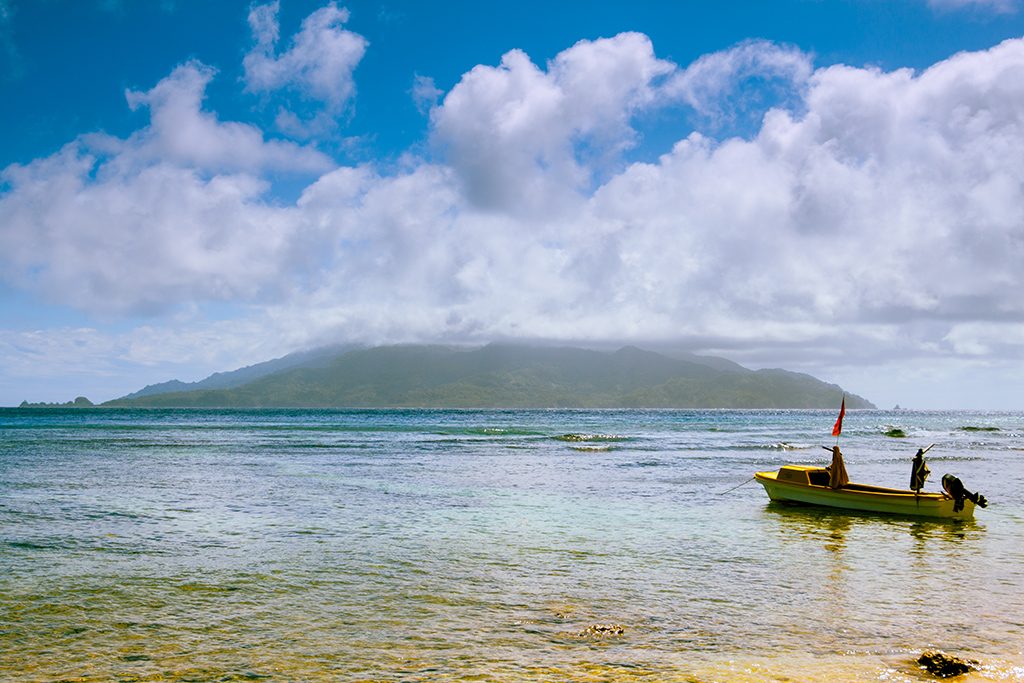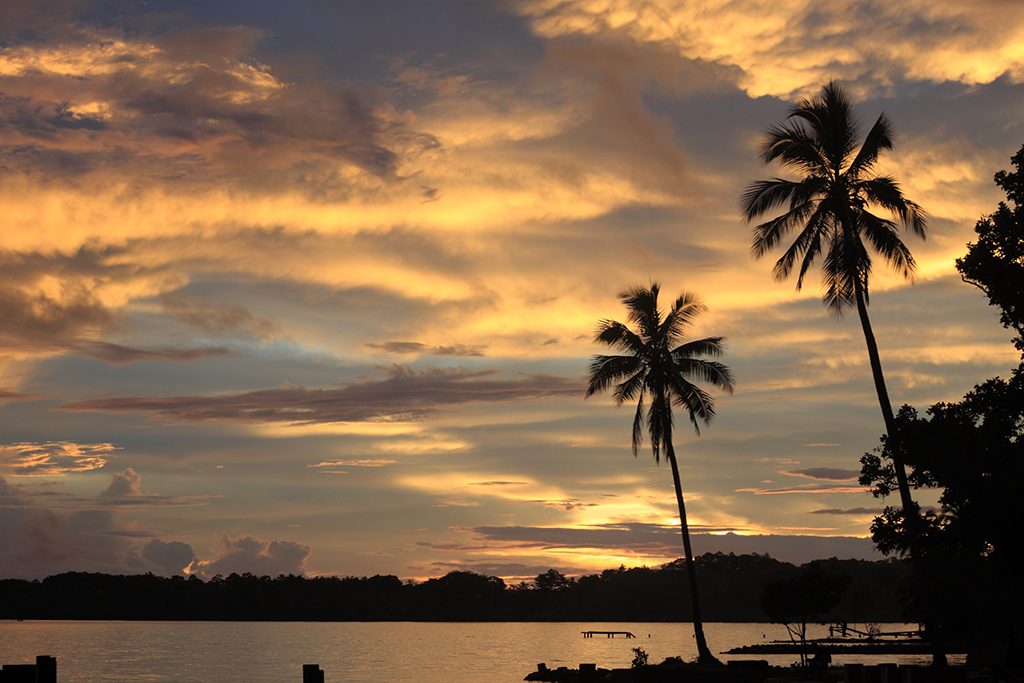| CLIMATE HOME | PREDICTING NEAR- AND LONG-TERM CLIMATE | UNDERSTANDING CLIMATE CHANGE | TOOLS AND TECHNIQUES | STAFF AND STUDENTS | CLIMATE NEWS |
We are using stalagmite reconstructions to study both forced and unforced changes in tropical hydroclimate on glacial-interglacial timescales.
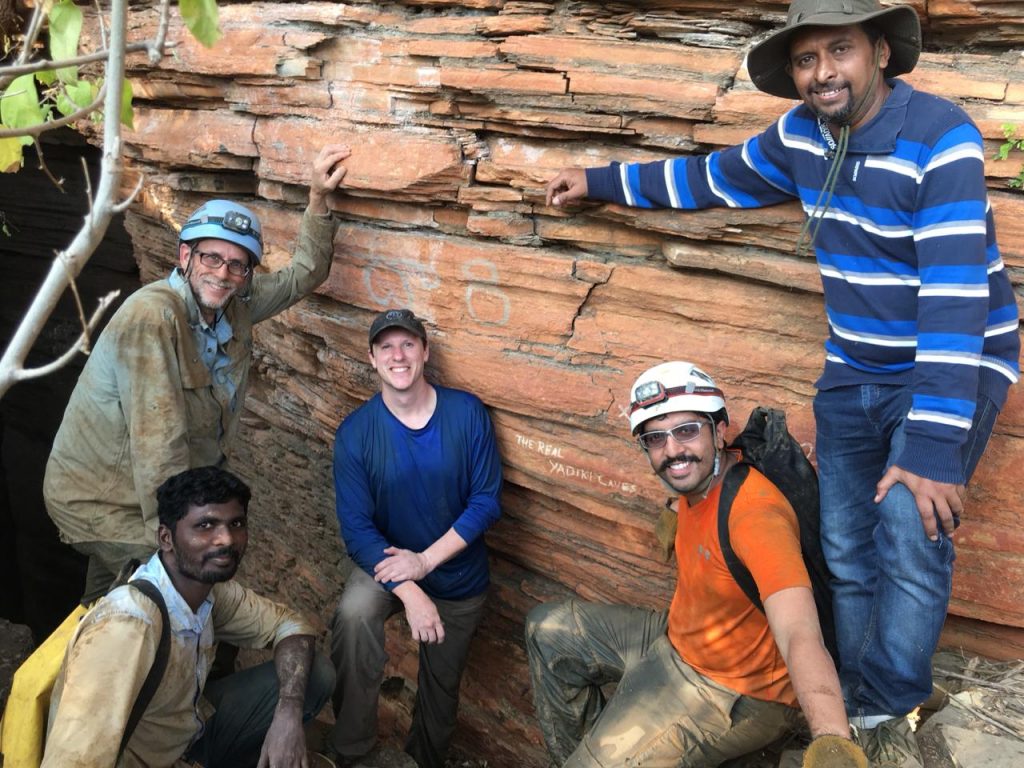
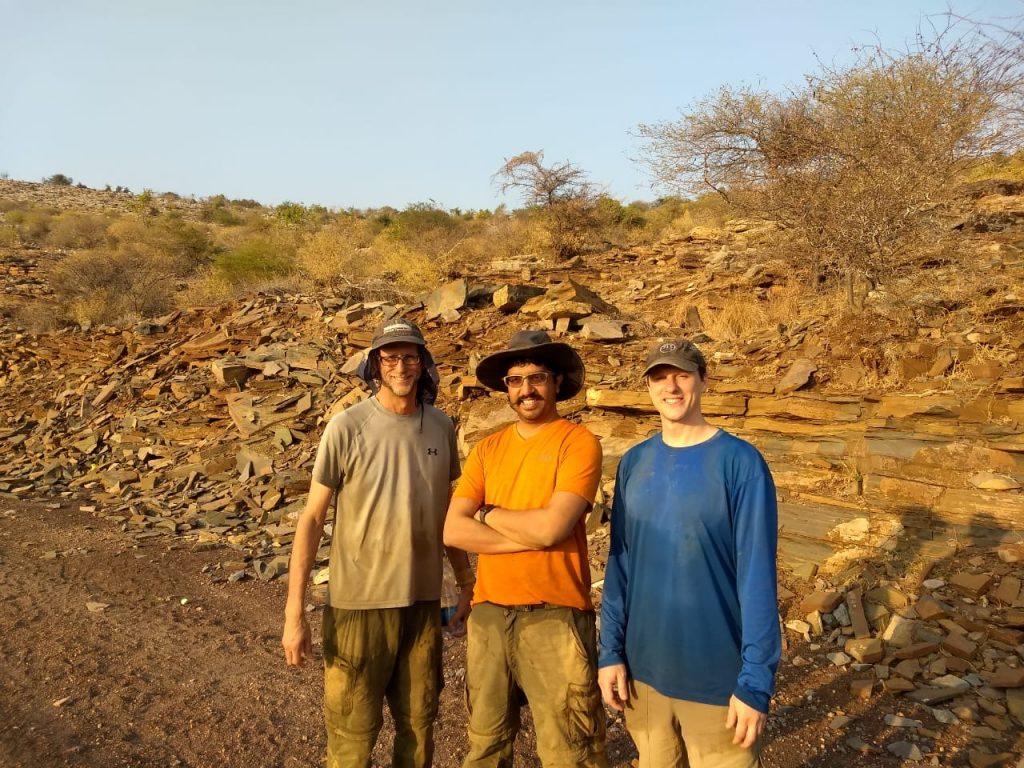
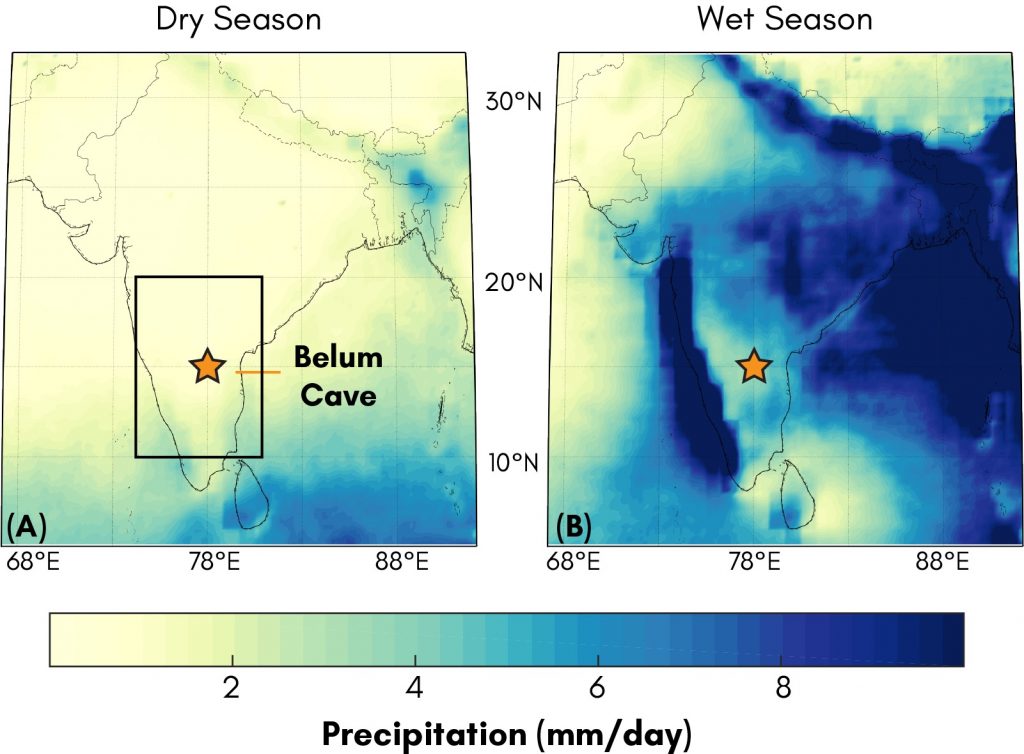
Stalagmite reconstructions of the Indian Monsoon
We have current NSF funding (PI: J. Partin, co-PI: K. Thirumalai, University of Arizona; grant # 1703123) to use stalagmites from the subcontinent of India to reconstruct the Indian Monsoon. Successful fieldwork in Feb. 2015 and recent fieldwork in Jan. 2019 to the states of Karnataka and Andhra Pradesh recovered multiple samples that are suitable for paleoclimate reconstructions. Several of the samples are being processed for U-Th dates and stable isotopic composition (δ¹⁸O) to reconstruct hydroclimate changes on glacial-interglacial timescales of the Indian Monsoon.
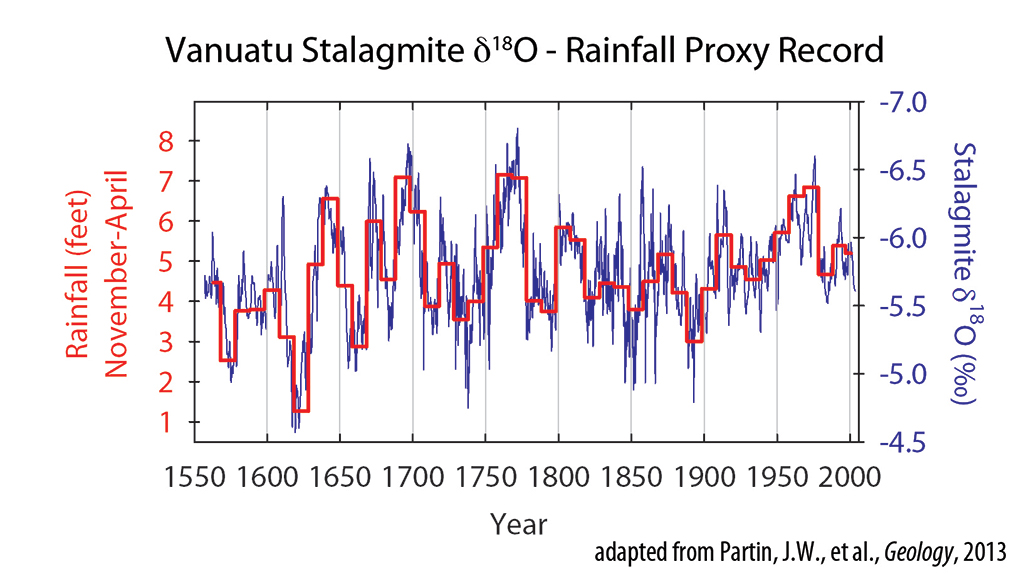
Stalagmite reconstructions across the western tropical Pacific
Past NSF funding (PI: J. Partin, co-PI’s: Y. Okumura, J. Banner, B. Cardenas, F. Taylor; grant # 1003700 and 1404003) was received to collect stalagmites from the Philippines, Solomon Islands, and Vanuatu. Fieldwork conducted in 2008, 2010, 2011, 2012, and 2016 recovered multiple samples from all of the locations. Past work showed large multi-decadal changes in stalagmite stable isotopic composition (δ¹⁸O) from sites in the Solomons and Vanuatu over the last 450 years, likely resulting from internal climate variability. Both sites in the Solomons and Vanuatu lie under the South Pacific Convergence Zone (SPCZ), a large band of tropical rainfall in the Southern Hemisphere. Modern stalagmite δ¹⁸O was calibrated against instrumental records of rainfall at both sites, such that stalagmite δ¹⁸O mainly reflects changes in rainfall amount over these small tropical islands. Current work includes submitting the publication of Holocene records from 3 sites across the Philippines, and another publication of glacial-interglacial at 2 sites in the Philippines. Several of the samples from Vanuatu and the Solomons are currently being processed for U-Th dates and stable isotopic composition (δ¹⁸O) to reconstruct hydroclimate changes on glacial-interglacial timescales of the SPCZ.
